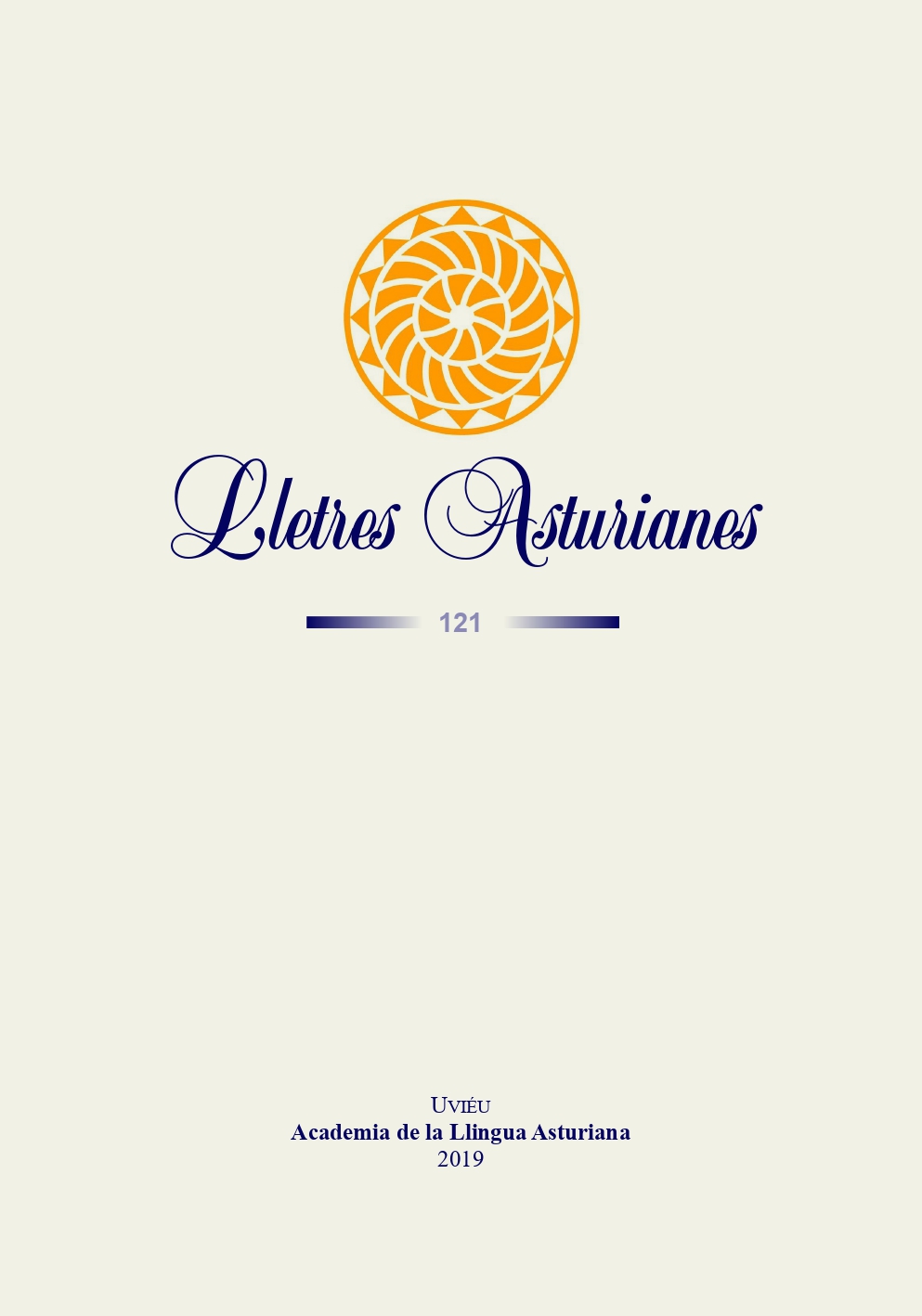Abstract
In the pages that follow, using the so-called Sayagués theatrical genre as starting point, seen from the point of view of sociolinguistics as a form of jaronismo and referring to works and testimonies of some of its leading exponents such as Juan del Enzina and Manuel Herrera de Gallinato, we will analyse how Leonese diglossia shows signs of prevalence in Renaissance texts. The ideologization of the hierarchy between languages A and B through literature strengthened latent prejudice and had a significant impact on the early and profound stigma of Leonese dialects spoken in Zamora and Salamanca, showing traits still present in the current metalinguistic discourse surrounding Asturleonese. By resorting to literature of the Spanish Golden Age in order to place Leonese in a position of subordination as compared to the official language, the power structure of the Crown of Castile unwittingly laid the foundations for a centuries old stigma and the consequences it has had among speakers to speed up its loss are noticeable in its contemporary linguistic reality. Moreover, we will stress the importance of the change of ethnolinguistic allegiance through the concept of encompassment described by Louis Dumont using historical documents that prove how the Crown of Castile blurs the Leonese identity within the wider Castilian world view, favouring the loss of linguistic consciousness and loyalty. The processes of sayaguesización and change of ethnolinguistic allegiance in the Kingdom of León are intertwined within a wider context of Castilian political hegemony during the 16th and 17th centuries which are also connected with the creation of the Spanish national narrative in the 19th century. We will finish by discussing evidence of Castile-centred linguistic nationalism in scientific essays in which the survival of Leonese as a separate code is questioned and accounts of Leonese speakers from the 19th and 20th centuries that provide trustworthy accounts of its stigma.
References
ALARCOS LLORACH, E. (1957): «Cartas a Gallardo en dialecto baviano», en Archivum. Revista
de la Facultad de Filología 7: 261-270.
ALVAR, M. (1999): Atlas Lingüístico de Castilla y León. Salamanca, Junta de Castilla y León,
Consejería de Educación y Cultura.
ÁLVAREZ BARDÓN, C. (1955): Cuentos en dialecto leonés. Astorga, Cornejo (primera edición
de 1907).
BARTOLOMÉ PÉREZ, N. (2007): «Poesía lleonesa en llingua asturiana», en Actes del II Conceyu
Internacional de Lliteratura Asturiana. Uviéu, Academia de la Llingua Asturiana.
BOBES NAVES, Mª. C. (1968): «El sayagués», en Archivos Leoneses: revista de estudios y documentación
de los Reinos Hispano-Occidentales. Alicante: Edición digital de la Biblioteca
Virtual Miguel de Cervantes <http://www.cervantesvirtual.com/obra-visor/el-sayagues/
html/09dc0658-1433-4b89-b083-8f290063c1c1_4.html> [Fecha de consulta: 28/02/2019].
BORREGO NIETO, J. (1996): «Leonés», en Manual de dialectología hispánica. El español de España.
Barcelona, Ariel: 139-158.
BORREGO NIETO, J. (2001): «El concepto de norma regional y su aplicación a las hablas castellano-
leonesas» en Actas del II Congreso Internacional de Lengua Española. La lengua
española y la sociedad de la información. Valladolid: Edición digital de la Bibliografía de
Estudios Leoneses <https://www.bibliocele.es/lengua/28388-el-concepto-de-norma-regionaly-
su-aplicacion-a-las-hablas-castellano-leonesas.html> [Fecha de consulta: 10/08/2019].
DUMONT, L. (1966). Homo Hierarchicus: The Caste System and its Implications. Delhi, Oxford
University Press.
ENZINA, J. del (1509): Aucto del repelón. Salamanca, Hans Gysser. Edición digital
<http://www.cervantesvirtual.com/obra-visor/aucto-del-repelon—0/html/ff97a24c-82b1-
df-acc7-002185ce6064_2.html> [Fecha de consulta: 28/02/2019].
EREÑO ALTUNA, J.A. (2002): «Un texto inédito de Miguel de Unamuno y Jugo: «Los arribes
del Duero» (1898)», en Cuaderno Gris 6: 117-128.
GARCÍA ARIAS, X. Ll. (2013): «Conciencia llingüística y testos asturianos medievales», en
Lletres Asturianes 108: 87-106.
GÓMEZ TURIEL, P. (2012): «Algunos antecedentes del concepto de leonés de Menéndez Pidal»
en Lletres Asturianes 107: 105-115.
GUTIÉRREZ CUADRADO, J. & J. A. PASCUAL (1995): «De cómo el castellano se convirtió en español
», en A. García Simón (ed.), Historia de una cultura. La singularidad de Castilla.
[Valladolid], Junta de Castilla y León.
LAMANO Y BENEITE, J. (1915): El dialecto vulgar salmantino. Salamanca, Tipografía Popular.
MARTÍNEZ ÁLVAREZ, J. (1996): «Las hablas asturianas», en Manual de dialectología hispánica.
El español de España. Barcelona, Ariel: 119-133.
MENÉNDEZ PIDAL, R. (1915): «Dialectos leoneses» en Articulación lingüística de España de
la Enciclopedia Espasa. España. Estudio geográfico, político, histórico, científico, literario,
artístico y Monumental. Volumen XXI.
– (2005): Historia de le lengua española. Ed. de Diego Catalán. Madrid, Fundación Ramón
Menéndez Pidal y Real Academia Española. 2 volúmenes. Disponible en [http://diegocatalan.
blogia.com/temas/i.-historia-de-la-lengua-espa-ola-de-ram-n-men-ndez-pidal/pagina/
/] [Fecha de consulta: 05/03/2017].
MORENO CABRERA, J.C. (2010): Lengua/nacionalismo en el contexto español. Madrid, Universidad
Autónoma de Madrid.
REALACADEMIA ESPAÑOLA (2001): Carmenar. En Diccionario de la lengua española (22.a ed.).
Recuperado de <https://dle.rae.es/srv/search?m=30&w=carmenar> [Fecha de consulta:
/08/2019].
RODRÍGUEZ CRUZ, Á. Mª. (1971): Vida estudiantil en la hispanidad de ayer. THESAURUS. Tomo
XXVI. Núm. 2. Centro Virtual Cervantes.
SALGADO FUENTES, C.J. (2015): La evolución de la identidad regional en los territorios del antiguo
Reino de León (Salamanca, Zamora, León). Salamanca, Ediciones Universidad de
Salamanca.
SEGATO, R. L. (2007): La Nación y sus Otros. Raza, etnicidad y diversidad religiosa en tiempos
de Políticas de la Identidad. Buenos Aires, Prometeo Libros.
STERN, Ch. (1961). «Sayago and sayagués in Spanish history and literature», en Hispanic Review
XXIX.

